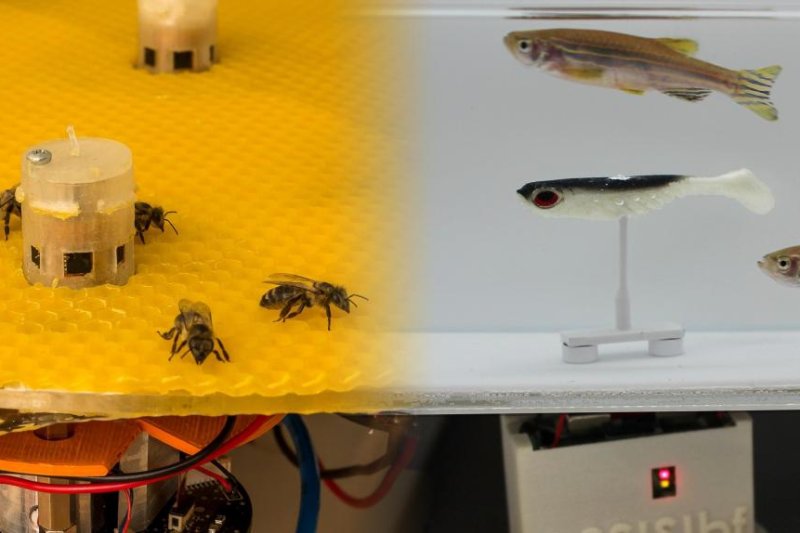Robotics spies capable of interspecies translation helped groups of bees and fish talk to each other. Photo by EPFL
March 21 (UPI) -- Bees and fish can now converse with each other thanks to new robotics technology designed by researchers in Europe.
Scientists developed robots to translate and deliver signals from groups of bees and schools of fish. The robots traded signals across an international border, allowing bees in Austria to talk to fish a few hundred miles away in Switzerland.
"We created an unprecedented bridge between the two animal communities, enabling them to exchange some of their dynamics," Frank Bonnet, a robotics engineer at the Swiss Federal Institute of Technology in Lausanne, or EPFL, said in a news release.
Previously, researchers at EPFL's Mobile Robots Group have designed and deployed "spy" robots that blend in with groups of animals. Most recently, the team used a robot to infiltrate a school of zebrafish and influence its swimming direction.
For the latest experiment, scientists decided to use the fish spy to help different species communicate.
In Austria, groups of bees naturally swarm around a pair of robot terminals inside a large container. Scientists used the terminals and fish spy to deliver signals and influence the different groups' behavior.
In the experimental hive, the terminals delivered signals in the form of vibrations, temperature variations and air movements. Different signals caused the bees to swarm exclusively around one terminal or the other. Signals from the fish spy caused the school to swim in different directions.
Each robot recorded the movement of the group, and then translated and delivered it to the other robot, which shared the message with the other group.
"The robots acted as if they were negotiators and interpreters in an international conference," said Francesco Mondada, a professor at EPFL's Biorobotics Laboratory. "Through the various information exchanges, the two groups of animals gradually came to a shared decision."
At first, the conversation between the two groups was disorganized, but after 25 minutes, both groups began to synchronize their movements, with the fish swimming exclusively counter clockwise and the bees swarming around a single terminal.
"The species even started adopting some of each other's characteristics. The bees became a little more restless and less likely to swarm together than usual, and the fish started to group together more than they usually would," said Bonnet.
Researchers described the interspecies communication this week in the journal Science Robotics.















